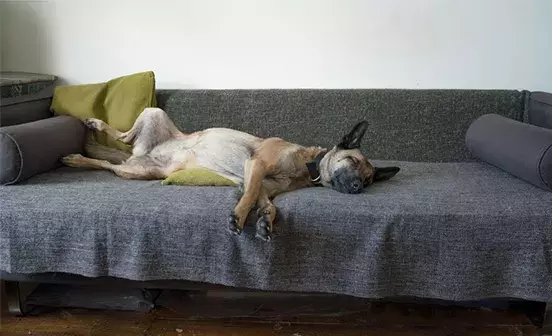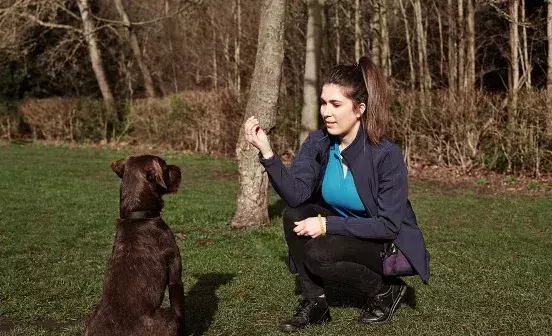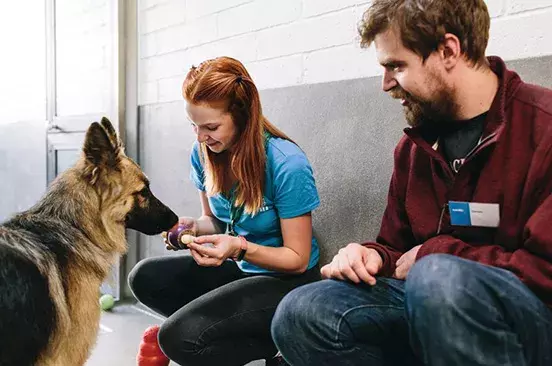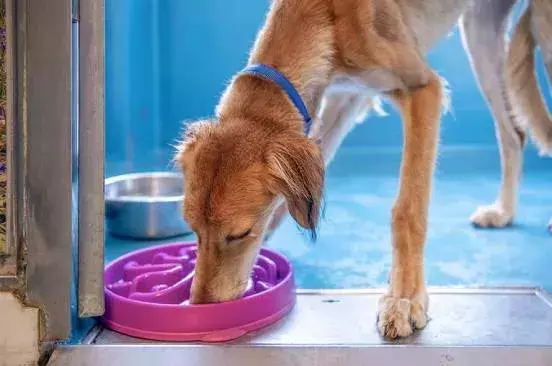In the same way it’s important to keep your dog physically stimulated with walks and play time, it’s also essential to exercise their brain. Most dogs are extremely motivated by food, so this can be done relatively easily with food-based games as part of their daily routine.
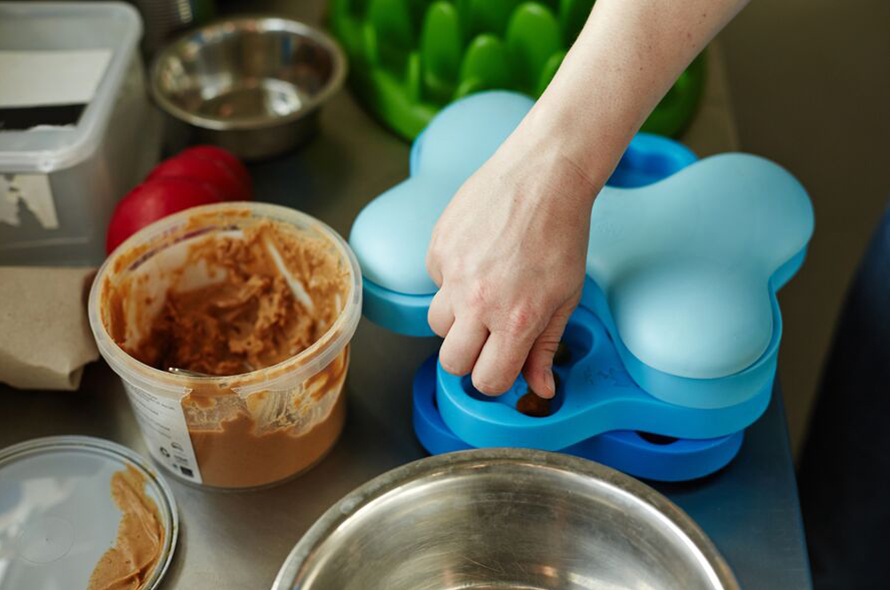
Brain games are beneficial for every dog, but they are particularly important if you have a dog who can’t do as much physical exercise, for example if your dog is a little older or is recovering from an operation. Brain games also help build self confidence in puppies as they encourage them to learn to play by themselves.
If your dog isn’t feeling stimulated, they can become bored or frustrated. This can lead to them developing unwanted habits as they try and find an outlet for their energy so it’s best to try and keep them engaged, plus you can have fun with them in the process.
Watch our video about interactive food games for your dog.
Engage your dog's brain using food and toys in creative ways
Mealtimes are a great time to introduce brain games as most dogs are extremely motivated by food.
We recommend using a portion of your dog’s daily food for games in order to avoid overfeeding. If you are going to use additional treats, it’s worth chatting to your vet first to see if you need to adjust your dog’s diet.
Scatter feeding and search games
One of the simplest games you can start with is scatter feeding. This encourages your dog to search for their food and helps encourage their natural foraging behaviours.
Scatter feeding is essentially what it sounds like. Instead of using a bowl, scatter your dog’s food on the floor, around the house or in the garden. This is best done on a hard, easy to clean surface if being done indoors. As your dog gets better at using their nose to find the food, you can scatter it over a larger area or an uneven surface, like grass.
Once your dog has mastered this, you can start hiding small piles of food for them to find. Pick places you don’t mind them rummaging, and where there’s no danger of anything getting damaged. As they grow in confidence you can make the hiding places harder to find, or even hide the food underneath something like a plant pot.
If your dog is finding it too hard to find the food and starts to get frustrated, you can help them by taking them closer to the food or throwing treats near to them.
Activity toys and puzzle feeders
There are lots of different toys and interactive feeders available that are designed to get your dog’s brain working, but there are also plenty of things you can do with everyday items you have at home.
A toy that you can quickly make yourself is a destruction box. Simply fill an old cardboard box with scrunched up balls of paper, old toilet rolls, anything that’s safe for your dog to tear up and then scatter their dry food and some of their favourite toys in and around the box. This is best done outside, or on a hard, easy to clean surface as it can get quite messy.
Whatever you choose, make sure you start off at an easy level. If your dog is finding it too hard to get their food, they might lose interest and give up.
Activity toys like KONGs encourage your dog to get active as they need to move them around to get the food out.
Puzzle feeders are similar but require your dog to do some problem solving. These can be a little trickier, so you might have to show your dog what to do if they are struggling, or teach them some other skills first such as picking things up or pulling them.
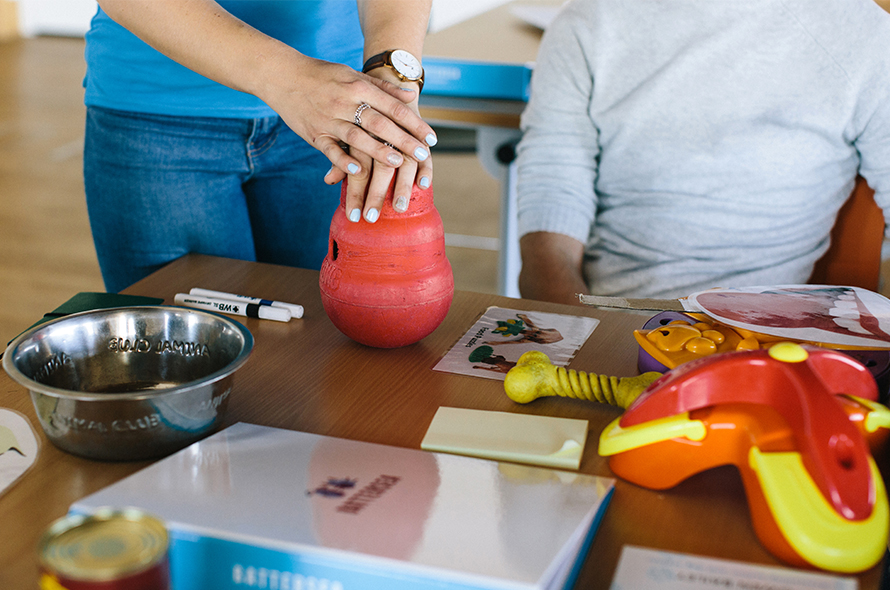
Toy stuffing
Toy stuffing is another way of making mealtimes more engaging. Toys that you stuff with food, like the KONG, are usually made from rubber and come in different sizes to suit your dog.
Start by filling the toy with dried food that will fall out fairly easily. Once your dog is comfortably getting this food out, you can gradually make things a little more challenging. You can either soak some of the dry food first or plug the end with tinned meat so that they have to really work to get the dry biscuit in the middle.
As your dog gets used to using the stuffed toy, you can increase the difficulty by packing them tighter and using sticky substances such as Marmite or peanut butter. You could also try adding various items to the stuffing mix such as fruit, vegetables, treats, fresh meat, spreadable cheese, pate etc. Variety and changing the mixture will keep their interest. The tighter you pack the food, the more challenging it will be for your dog. Just remember to put the tastiest food at the other end to spark their interest and encourage them to eat all the way through.
You can even try freezing the food inside the toy using water or gravy. This will help it to last even longer and is a nice treat on a hot day. Just make sure you give this to your dog on a hard, easy to clean surface.
Brain games with multiple dogs
Different dogs will respond to these games in different ways. Some may become relaxed and settled, whilst others may be more active and playful. If your dog shows negative behaviours around food or becomes possessive, then we suggest consulting an expert first on which games might work for them, so you don’t encourage these behaviours.
If you have more than one dog, you may want to separate them while you play these games, so that they can take their time and enjoy them without feeling like they need to fight for their food, or for attention.
We recommend supervising your dog(s) while they play with any puzzle toys or activity feeder, to make sure they don’t chew or swallow any item that could be harmful.
Download steps as a handy advice sheet and use it as a reminder to train regularly:
